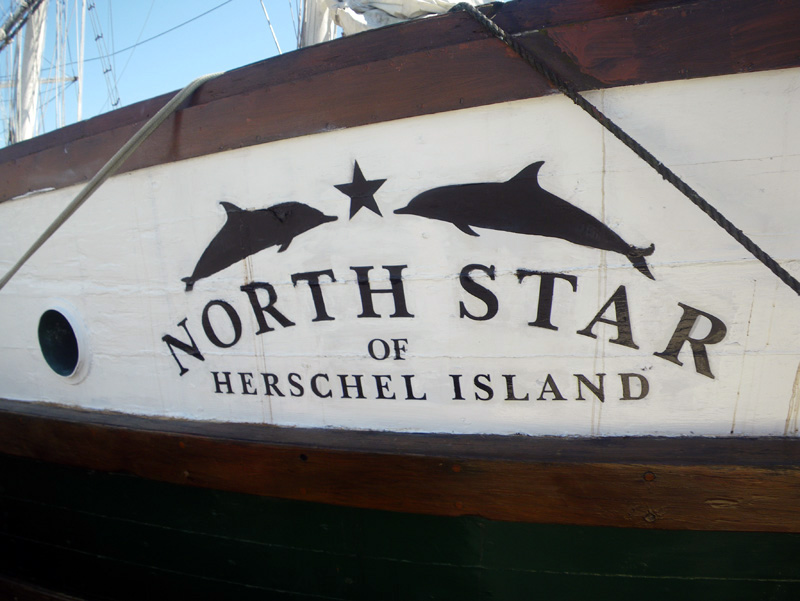
The North Star of Hershel Island is 58Â foot long Arctic transport ship.
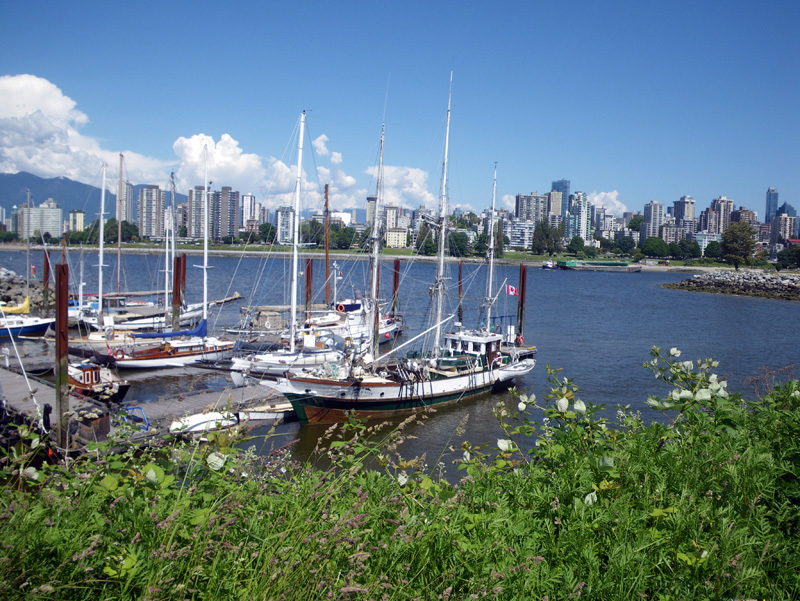
She’s the only one left of her kind, a fully rigged, sailing cargo vessel, built in the 1930s for Inuit fox trappers.
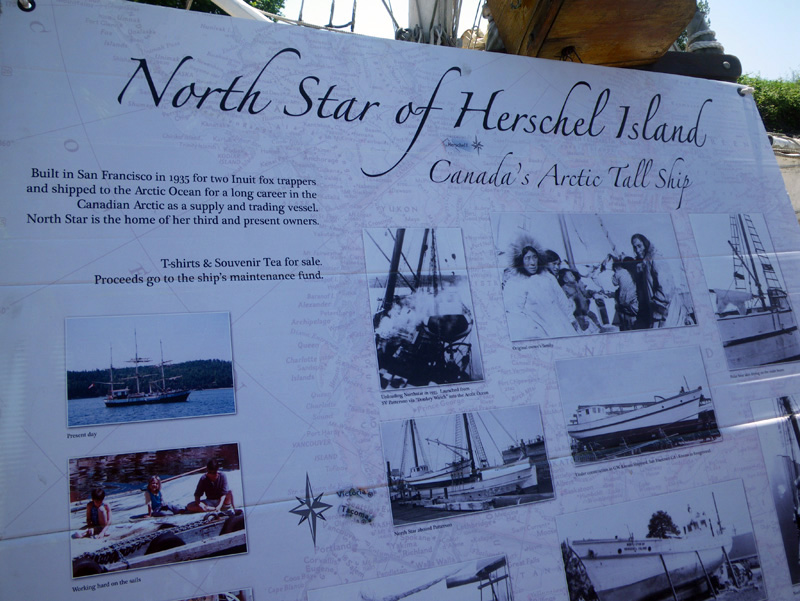
Now owned by Sheila and Bruce Macdonald, she lives in the Vancouver Maritime Museum’s Heritage Harbour.
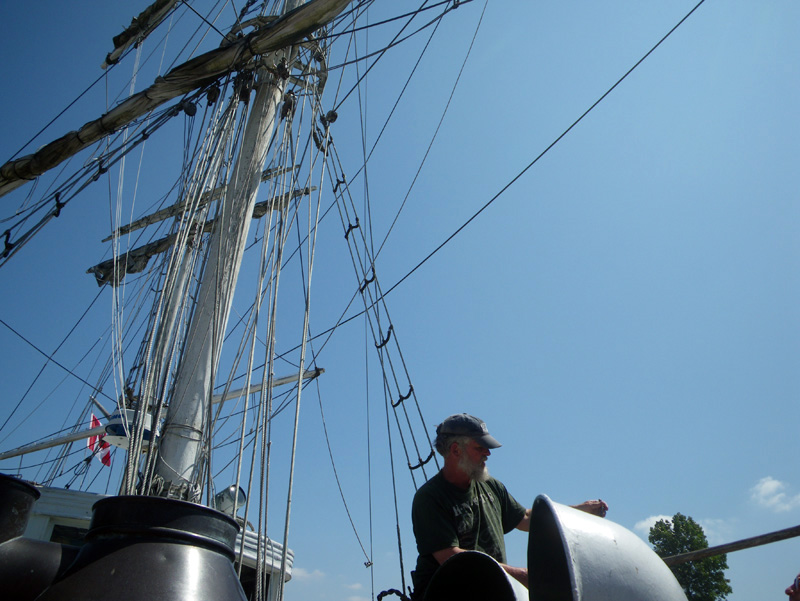
The boat is a museum all in herself, but also home for Bruce and Sheila. They make her available as a teaching tool here at the Heritage Harbour, and for tall ship festivals around the world.
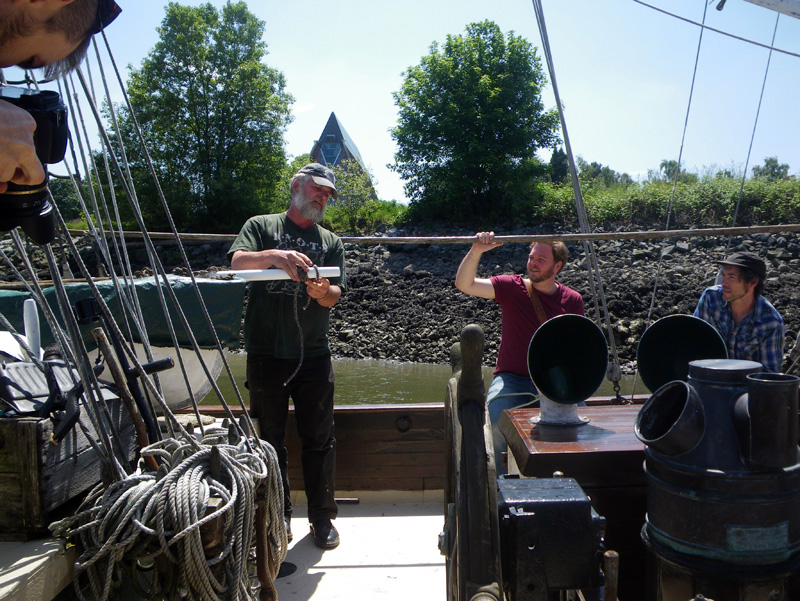
I was lucky to get aboard as part of a worskshop that we organized at the Maritime Museum.
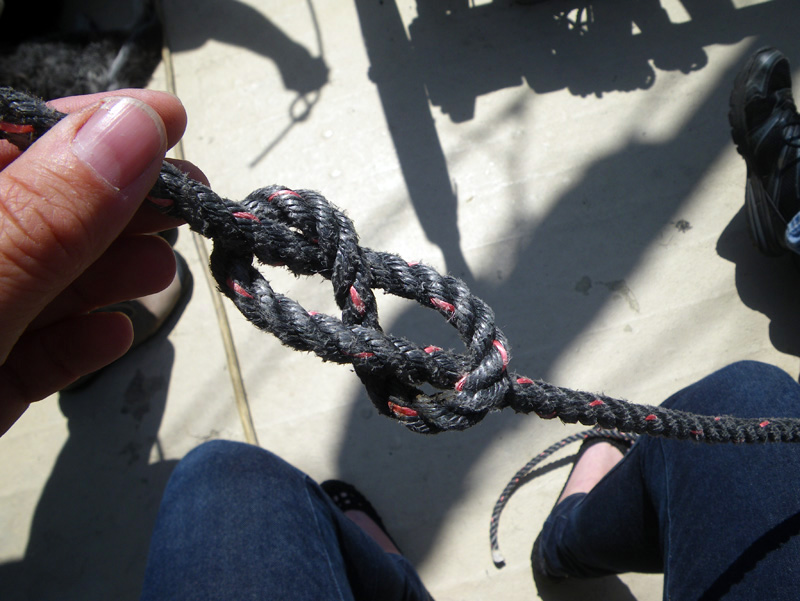
This workshop was about tying knots.
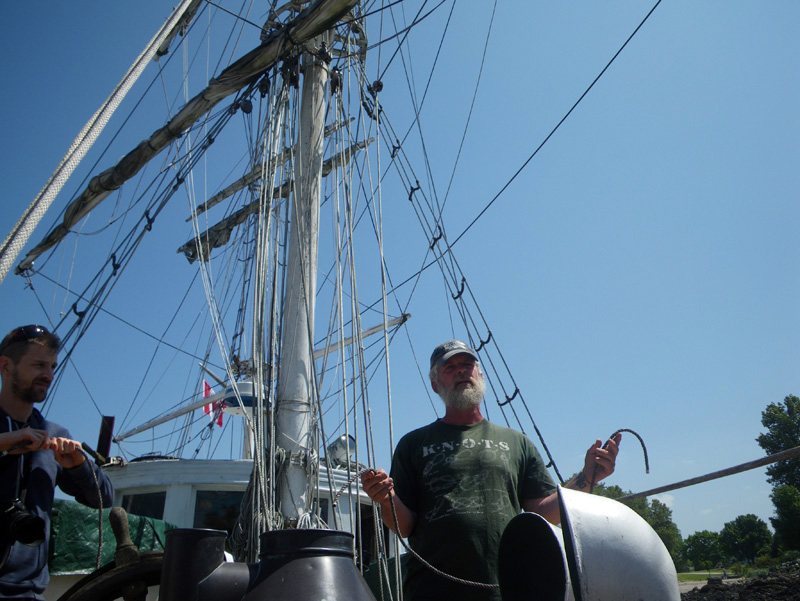
Bruce has the expertise of a true sailor, having logged over 75,000 nautical miles at various helms of traditionally rigged ships,
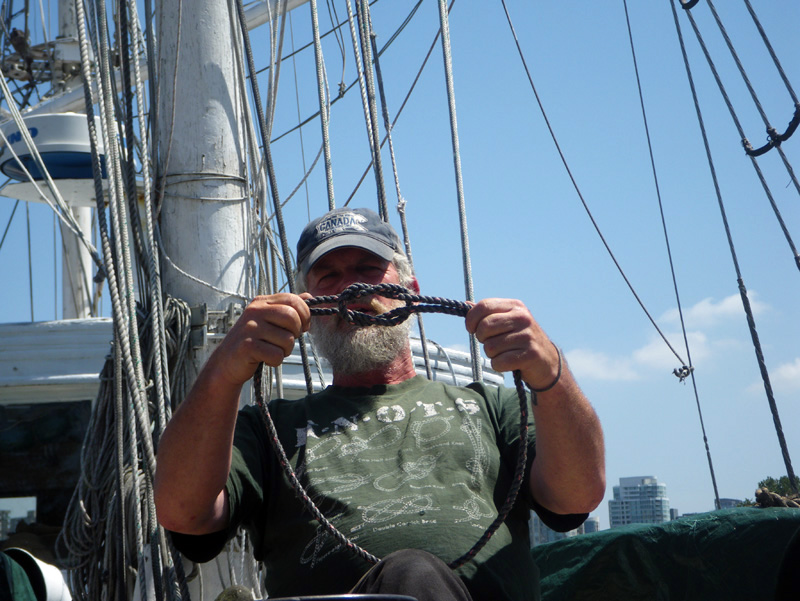
but he delivers information with the flair of an artist.
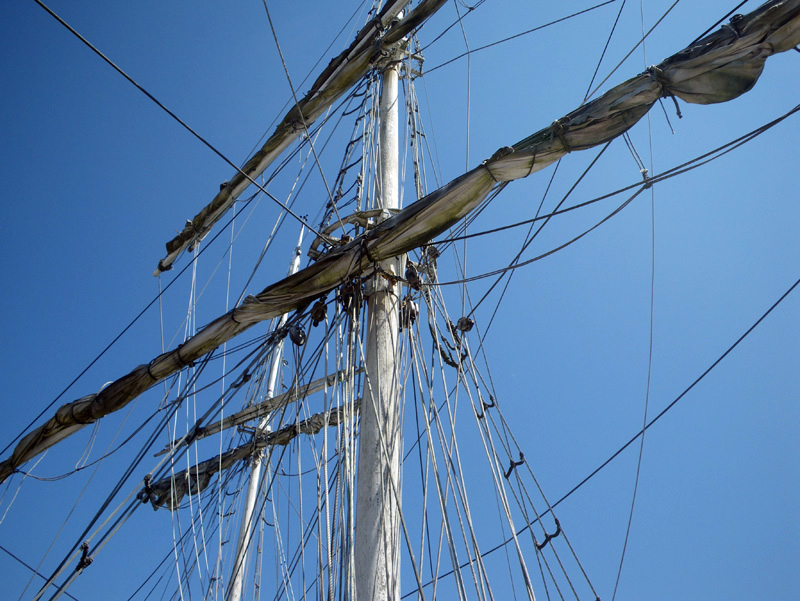
I was so busy trying to learn the knots that I didn’t get to take any pictures of them.
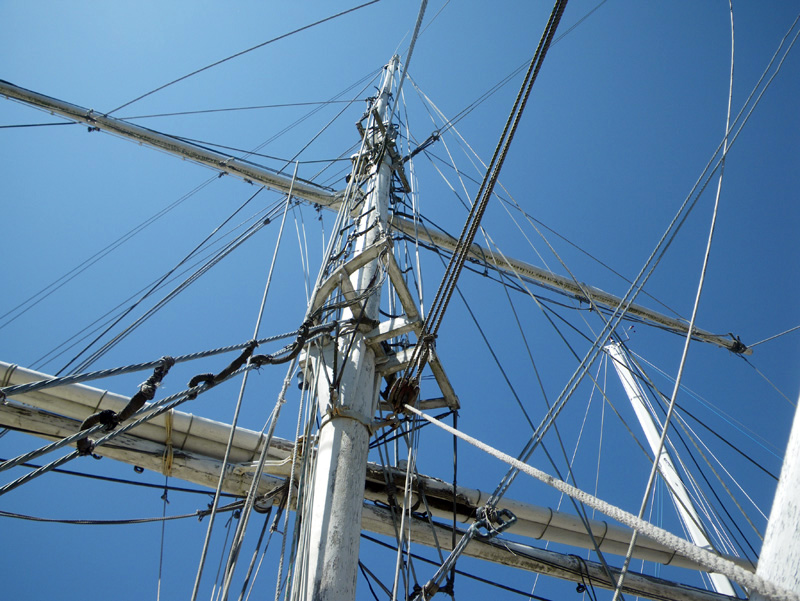
Now I have neither the knots in my head nor images of them in my camera,
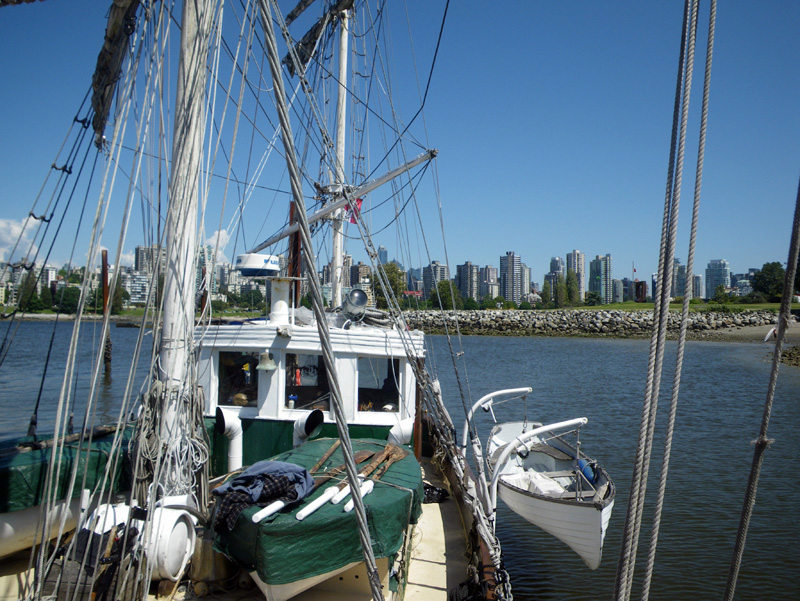
just a few shots of the pretty North Star.
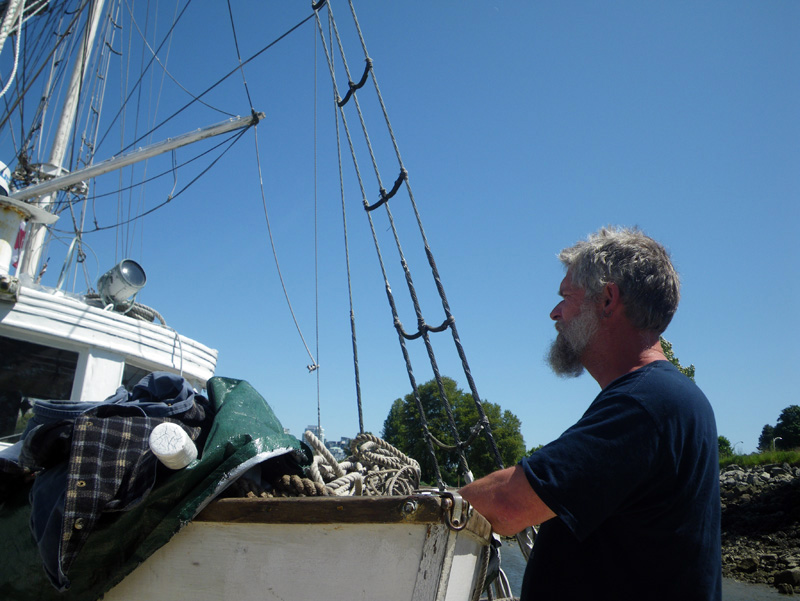
I went back a few days later to collect some equipment that Bruce offered to lend on our trip through Lions Gate.
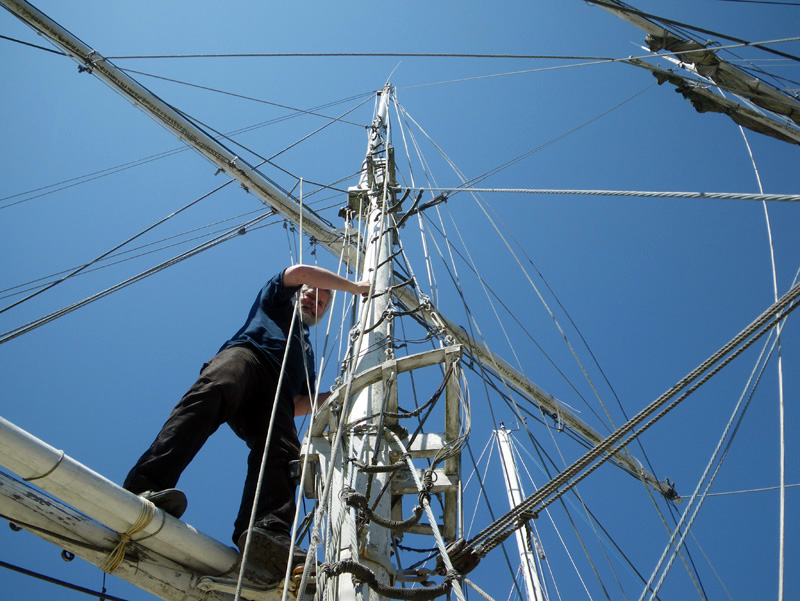
We climbed into the rigging of the boat, as high as I could go.
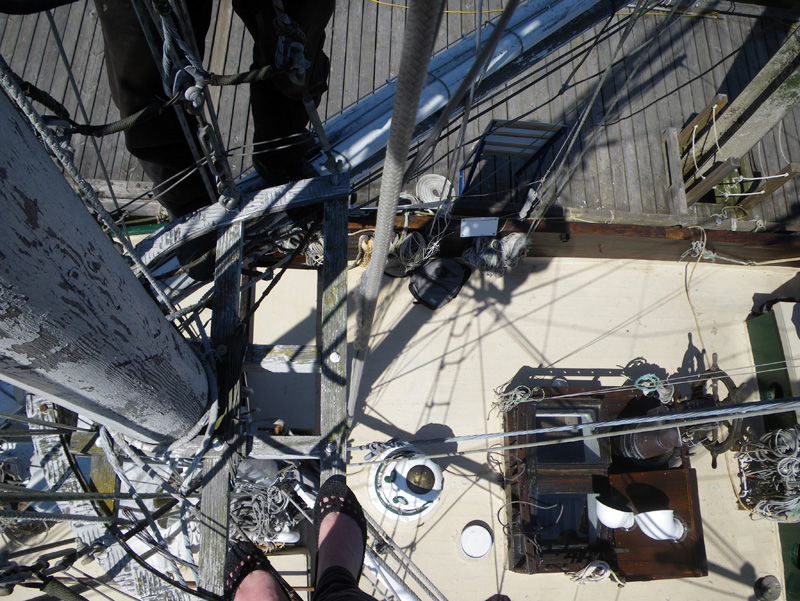
From there, I felt the exaggerated pitch and roll of the boat as she moved quietly by the dock.
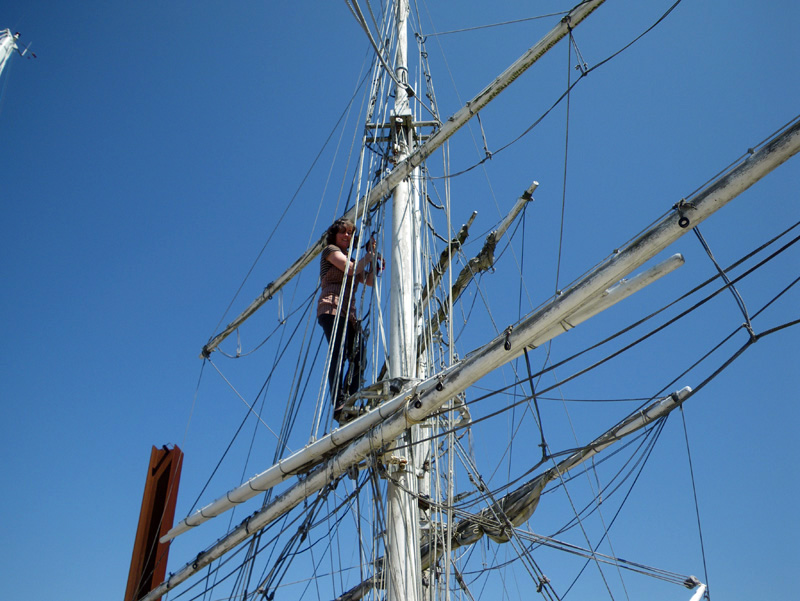
I tried to imagine how hard it would be to work up here when the boat was actually sailing.
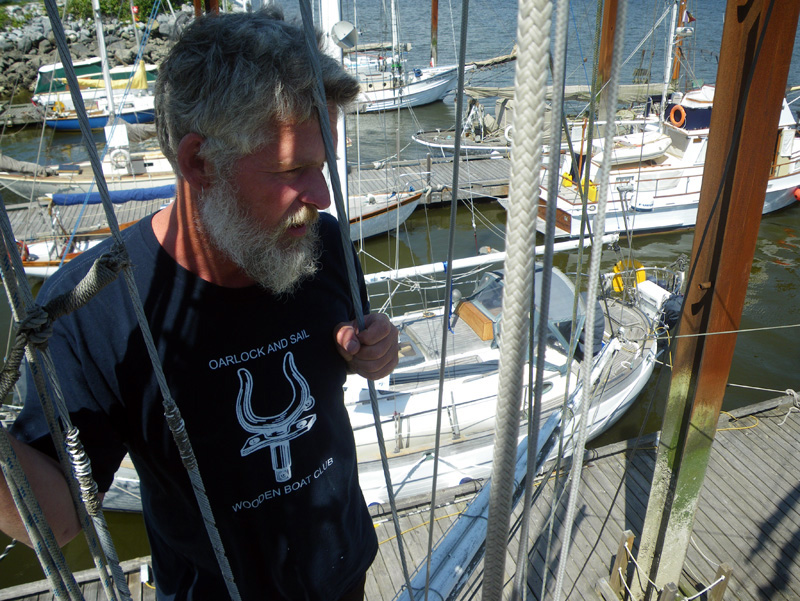
“It can be quite active,” said Bruce, “but sometimes when you are aboard a crowded ship at sea, the rigging is the only place to be alone.”
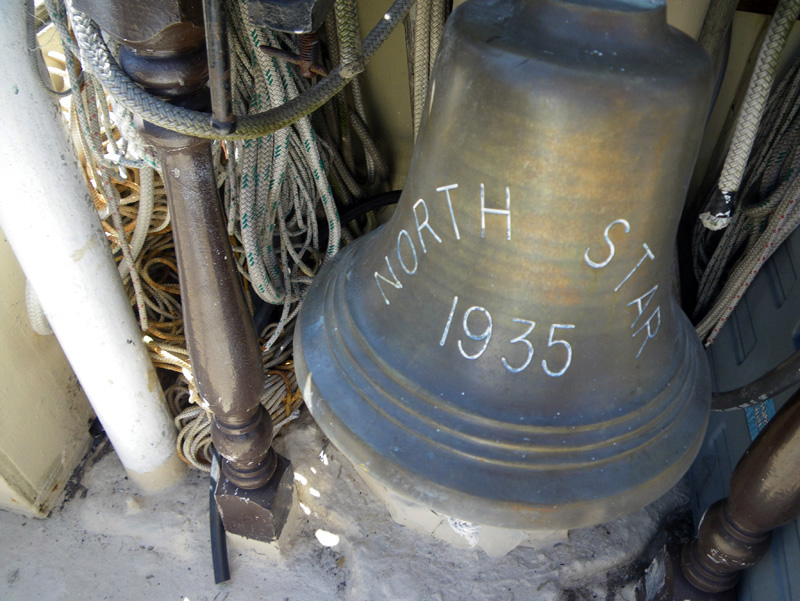
The North Star was built in 1935 and used for 25 years to transport fur and supplies between Aklavik and Sachs Harbour in Alaska.
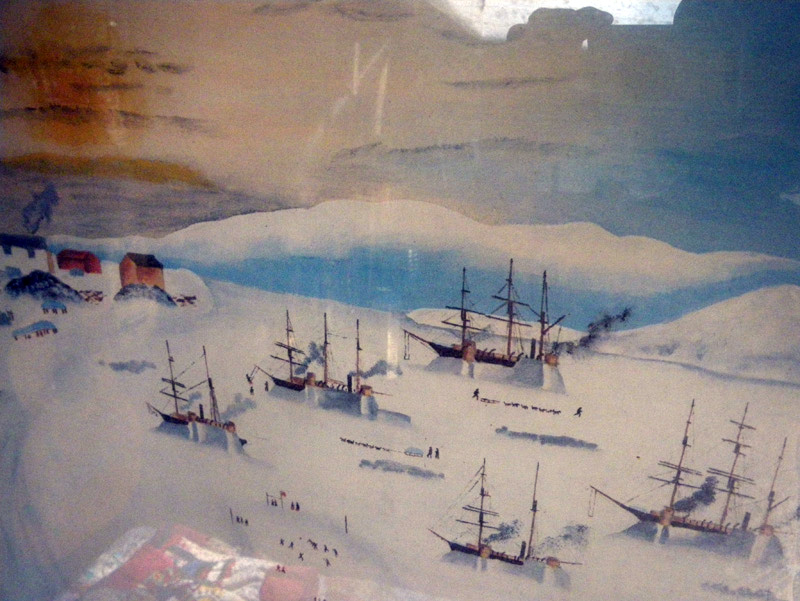
A painting down below shows what life might have been like, spending 9 months frozen into the ice. That’s how the ship would winter over if she did not make port before the ice closed around her in the north.
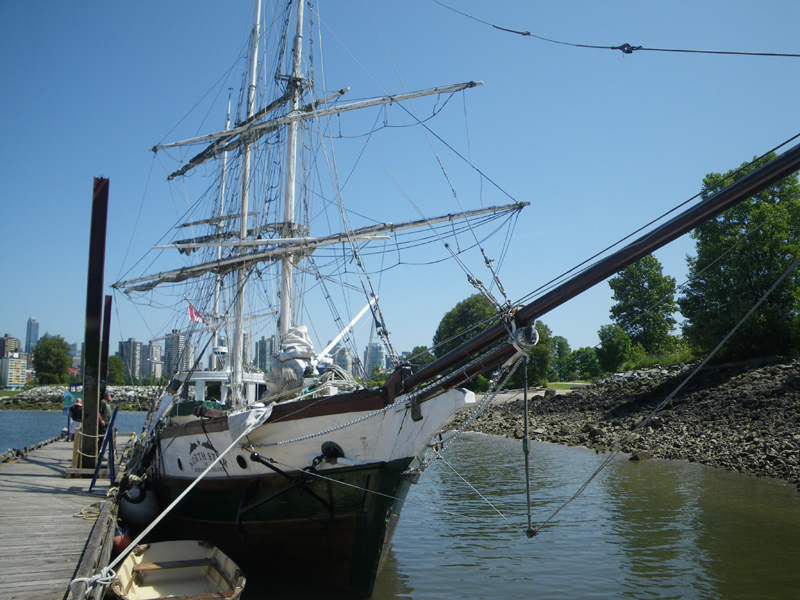
Bruce pointed out the roundness of her hull, designed so that when she was surrounded by ice, the expansion would push the boat up rather than crack it to pieces.
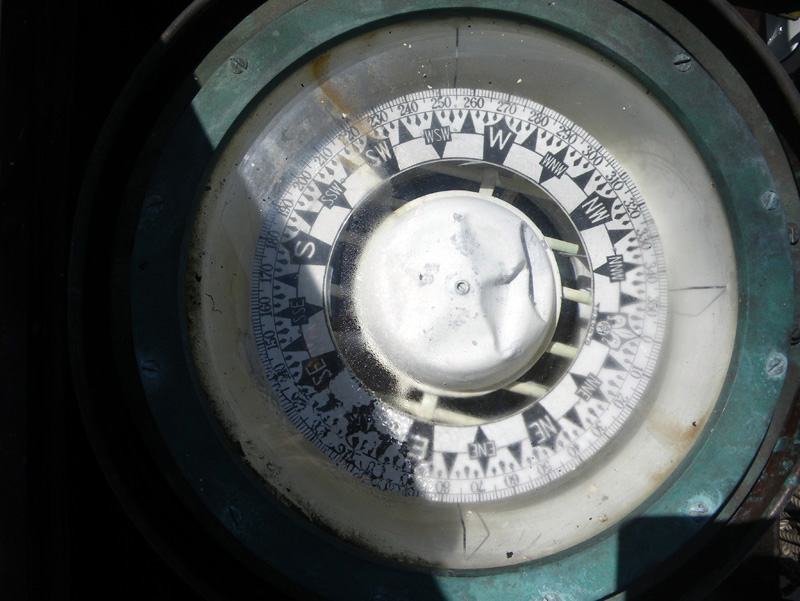
In 1967 the boat was purchased by Captain Sven Johansson, a Swedish-born Arctic explorer who outfitted her as a research vessel.
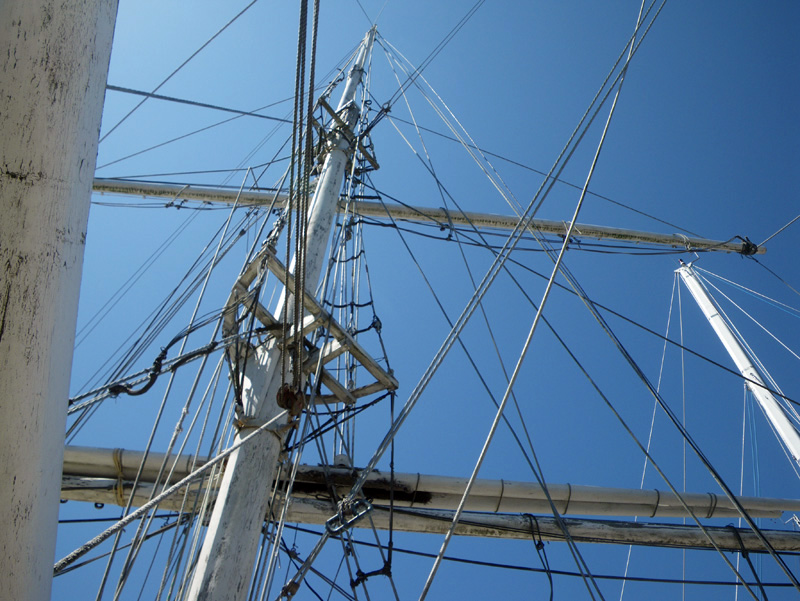
Some details, like the square rigged mast, date back to when Sven saved her from the beach.
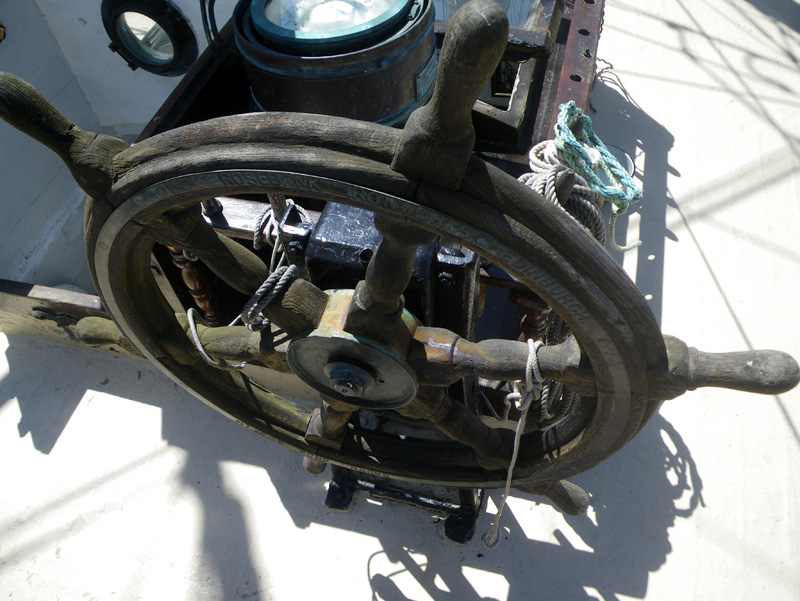
and some have been added by Bruce over the years.
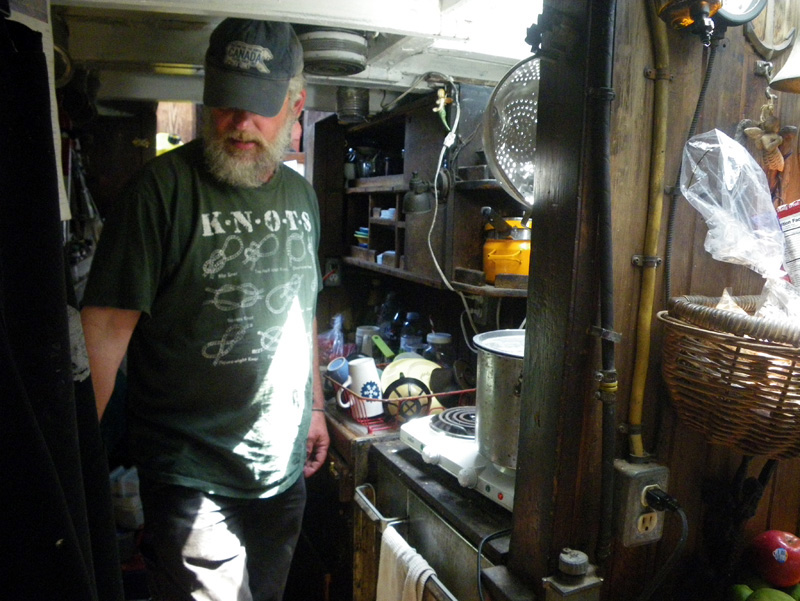
Below deck, the cabins are perfectly organized for a life spent in motion;
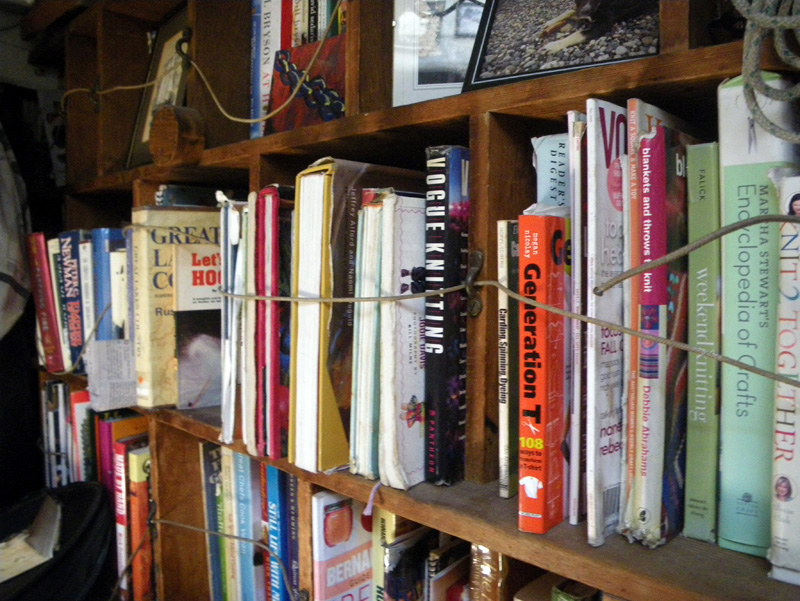
everything that moves must be tied down.
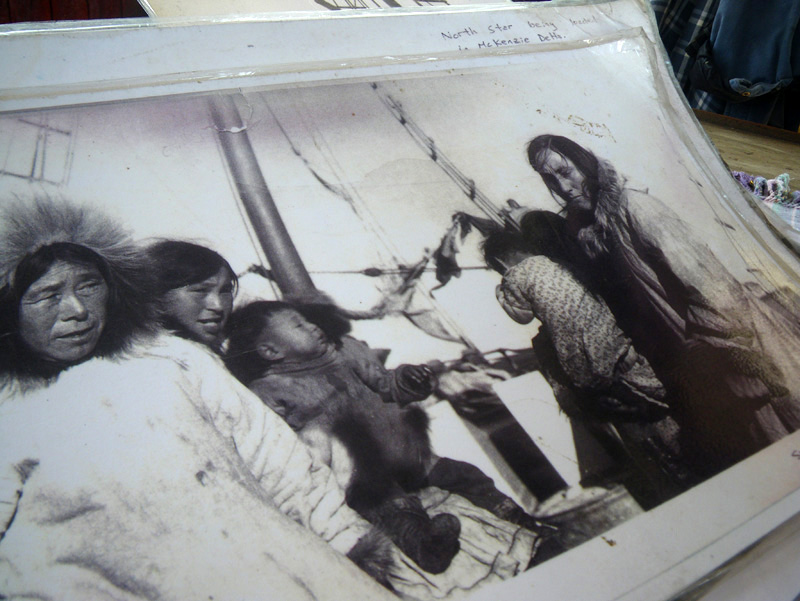
Bruce took out some photographs that he’s collected of the original owners. This is Fred Carpenter’s mother and family, trappers and traders who sailed the ship in her prime. Records and diaries that Bruce found suggest that at one time there might have been 30 people living on board.
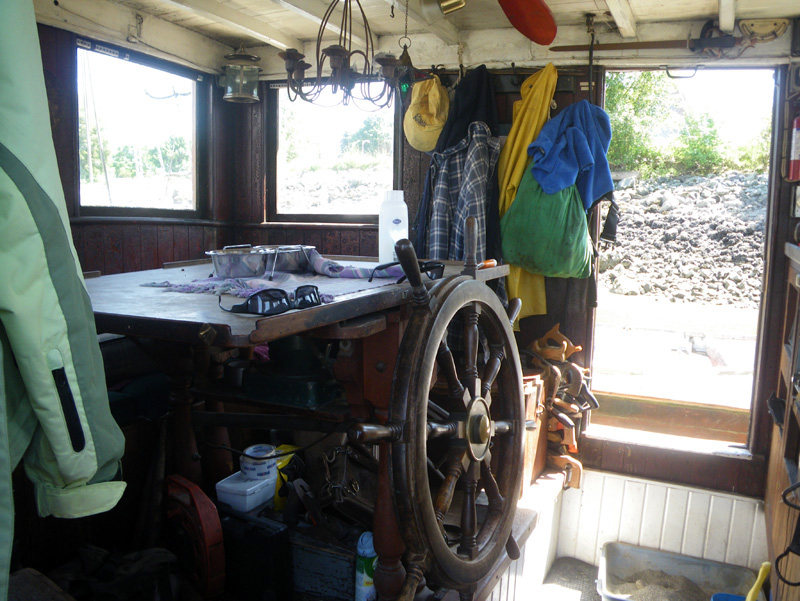
Bruce showed me the main cabin and I imagined his daughters doing their homework around the helm.
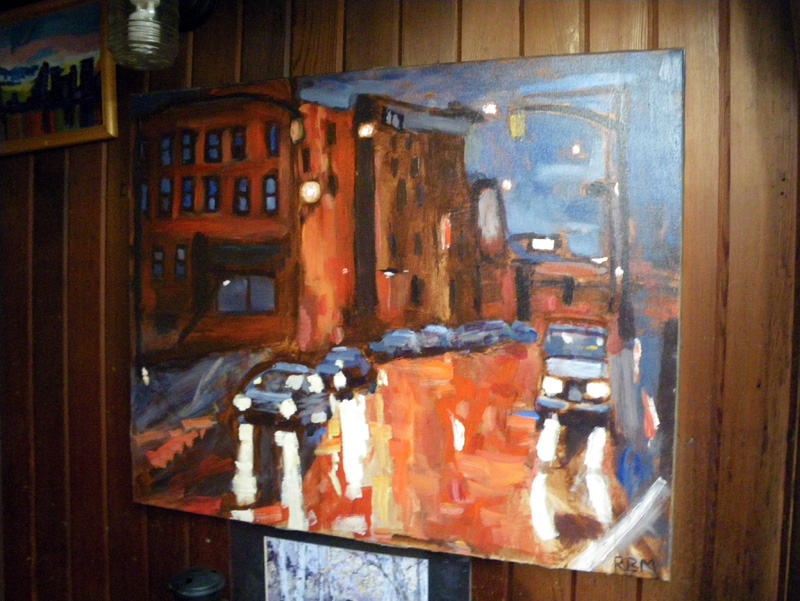
The ship serves as studio and office too. Here is one of Bruce’s paintings.
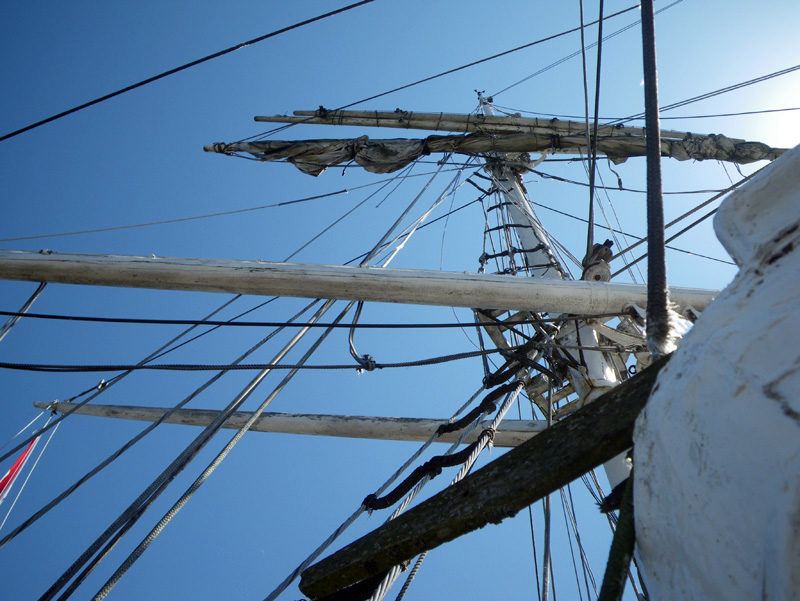
Bruce wrote a book about the history of the ship,
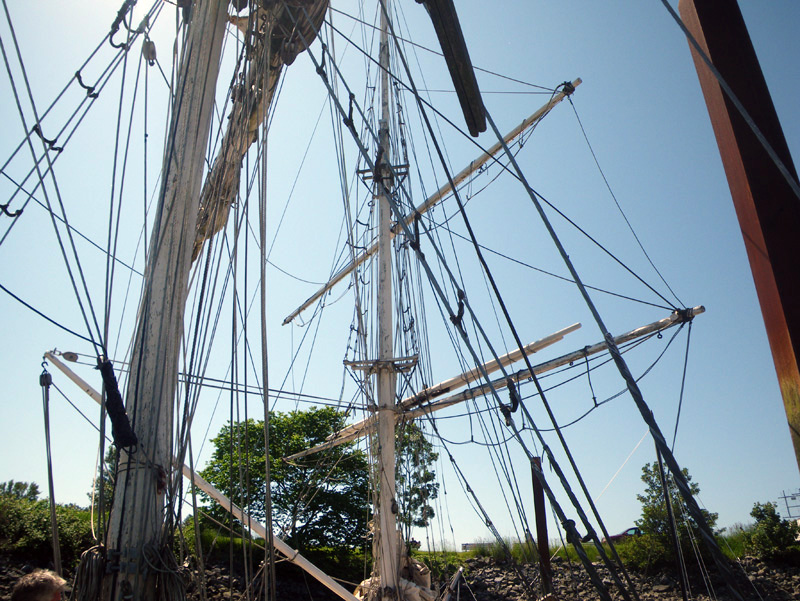
and she’s open to the public, “as a way of educating people about Arctic history such as for school group tours and historical societies.”
↑ Return to Top of Page ↑